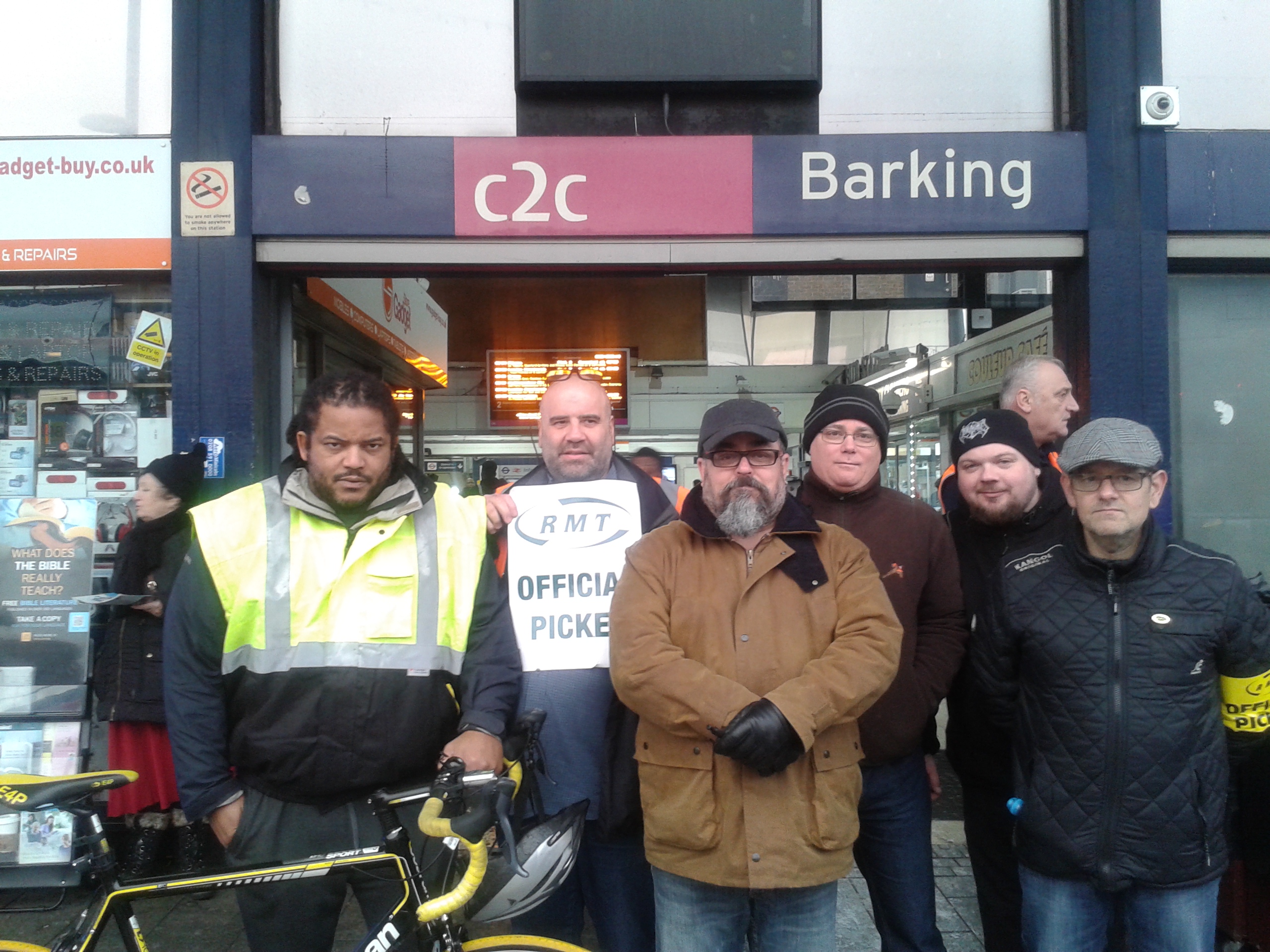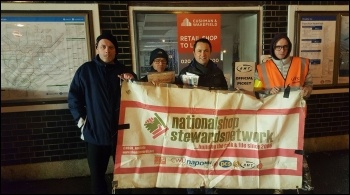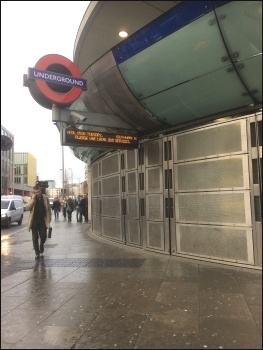London tube strike solid in fight for jobs and safety
The strike of 4,000 station staff between the 8th and 9th January brought London to a standstill on a very busy back-to-work day when up to 4.8 million passenger journeys would have taken place in the capital.
This was a pivotal moment for station staff, who showed their power as a section of workers. It is testament to the fighting strategy of the RMT, whose actions brought over the rank and file TSSA reps and members who revolted against their leaders who had attempted to do a shabby deal with the strike busting mayor Sadiq Khan.
Many train drivers also quite rightly refused to drive their trains on the grounds of safety, as stations, the few that were open, were staffed by untrained and unqualified and unfamiliarised staff.
This strike, on top of the successful overtime ban, which highlighted the dangerous understaffing of the tube and closed over 80 stations when staff refused to work rest days or overtime, will give confidence to this section of workers to take more action if necessary.
Mayor Khan instead of condemning strikes should find the money to fund the hundreds of extra frontline jobs that are necessary to staff the underground, which carries more passengers than the combined numbers of all Britain’s other rail networks.
A salary cap of managers at £100,000 a year instead of the £600,000 that some off them get would be a start.
Bringing cleaning and engineering back ‘in house’ would also save millions. The underground is very soon going to have its subsidy removed, which would make it the only major metro in the world unsubsidised, this must be reversed.
Indeed we call for an increase in funding to provide a fully staffed, fully publically owned service, which would provide a cheap and safe underground for the people who use the service.
John Reid, outgoing RMT Executive Member
Leytonstone
Going along to the picket line at Leytonstone station was energising and inspiring. We listened to station staff explaining their experiences and their reason for striking. The drastic cuts to station staffing on the Underground have resulted in many stations being closed and some very busy stations left running without any staff.
This is causing disturbances to travellers and puts their safety at risk. It is also overworking the very limited staff and they are put under huge pressure. They are told last minute where to drop off the keys to the station because there is no one else to replace them, they are forced to stay behind, and worst of all some of them are left alone to run a very busy station. This puts their safety at risk as well as travellers’ safety.
But these workers – in the unions RMT and TSSA – have had enough. They have been pushed to the limit and by striking they are showing the government, the London mayor and Transport for London (TfL) the dangerous route the London Underground service is being taken through.
TfL has enough money to be able to sufficiently staff all stations but it is choosing not to do so. Instead it is wasting money covering gaps in staffing with ‘hastily briefed’ managers who get paid three times the rate of station staff.
There are some tube managers who earn up to £600,000 a year. The workers told us that some of the top managers’ bonuses are more than the workers’ annual salaries. The RMT is suggesting having a cap of £100,000 for the wage of senior TfL managers.
The strikers that we met understand that the cuts in station staff are not an individual issue, that the government is attacking all workers and vital services through its austerity plans. However, bosses might think they have power, but the strike today shows once again who has the real power. When RMT members don’t go to work – nothing moves. Imagine if NHS staff, teachers, the transport workers and others go on strike together – this pro-austerity Tory government can be brought down and we can fight to improve services and conditions for all workers.
Isai Priya
Barking
Pickets at Barking train station gave out 1,000 leaflets to C2C rail commuters this morning who, with one or two exceptions, fully understood that the strike is about their safety and their service. As Colin Hall, Barking station rep, explained to the Socialist:
“I think people have had enough of austerity. They realise we are all workers together. There’s not enough staff on the underground to keep it safe and that’s what we are proving. We’ve proved it today because the service has shut down.
“Before ‘Fit for the Future’, station staff industrial action didn’t stop all services but now, after ‘Fit for the Future’, management can’t run the train service safely and that’s what we’ve shown today”.
Pete Mason
Victoria
Having walked passed numerous closed tube stations, I found a lively picket line at Victoria station of around 20 workers from RMT and TSSA.
One striker told me that while working alone on New Years Eve she was sexually assaulted by a passenger. Having another member of staff at the station could have prevented the assault. These are the dangerous conditions that underground staff find themselves working in.
Another striker explained that many stations are operating below minimum staffing numbers and of the staff that are there many are from a new lower grade and are not trained in safety to the same level as before. There was fear on the picket line about what could happen if the station needed to be evacuated.
Many picketers wanted to discuss mayor Sadiq Khan and his disgusting comments on the strike. One said she had never had faith in Khan to be a different kind of mayor to Tory Boris Johnson.
Another striker had hoped Khan would end the staff shortages and reverse the negative impact of ‘Fit for Future’ plans. He said that while Boris Johnson is gone, London still has a mayor who attacks the trade union movement and strike action.
It is now clearer than ever to workers in London, particularly those on the underground, that Sadiq Khan is not a mayor who will stand up for them or for a safe and well-staffed transport system.
Helen Pattison
This version of this article was first posted on the Socialist Party website on 9 January 2017 and may vary slightly from the version subsequently printed in The Socialist.












